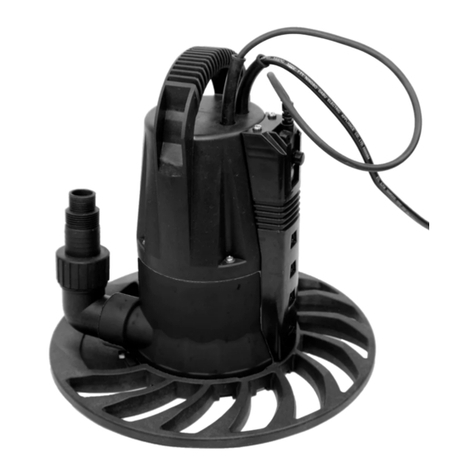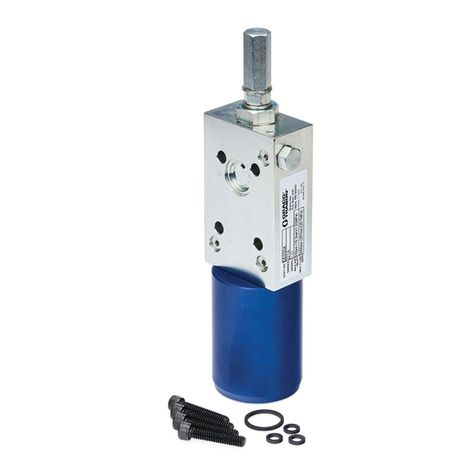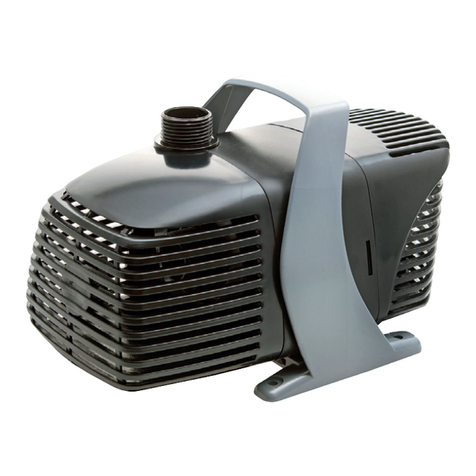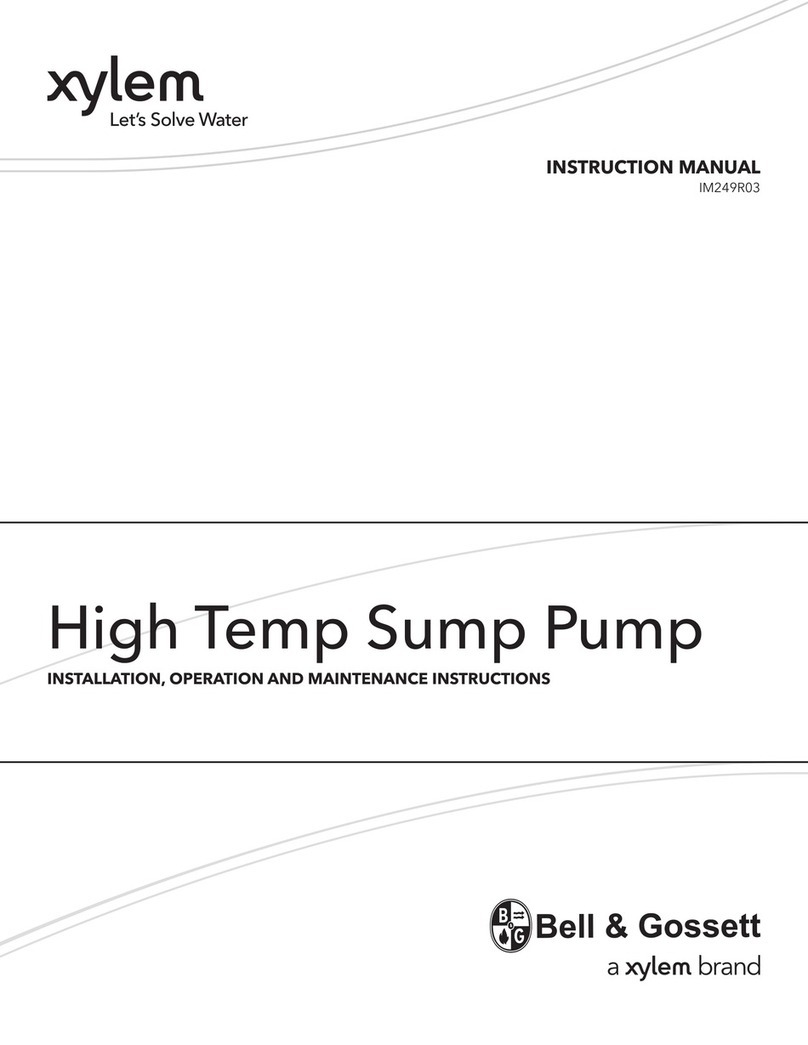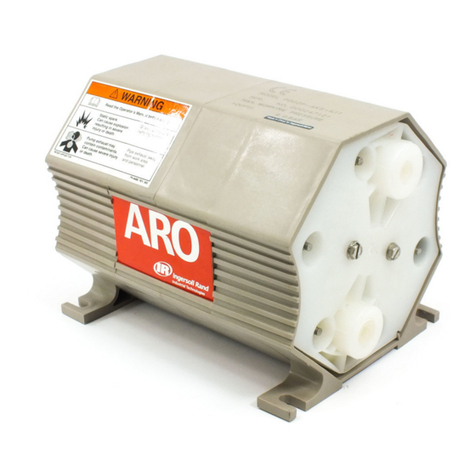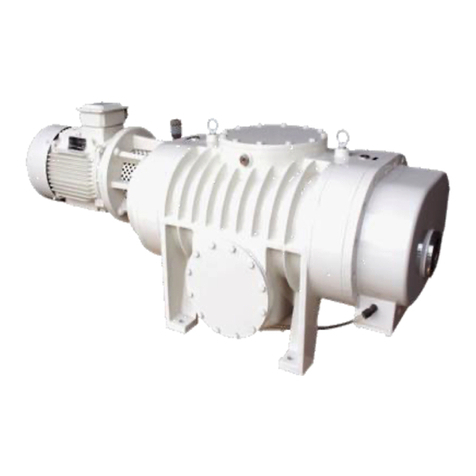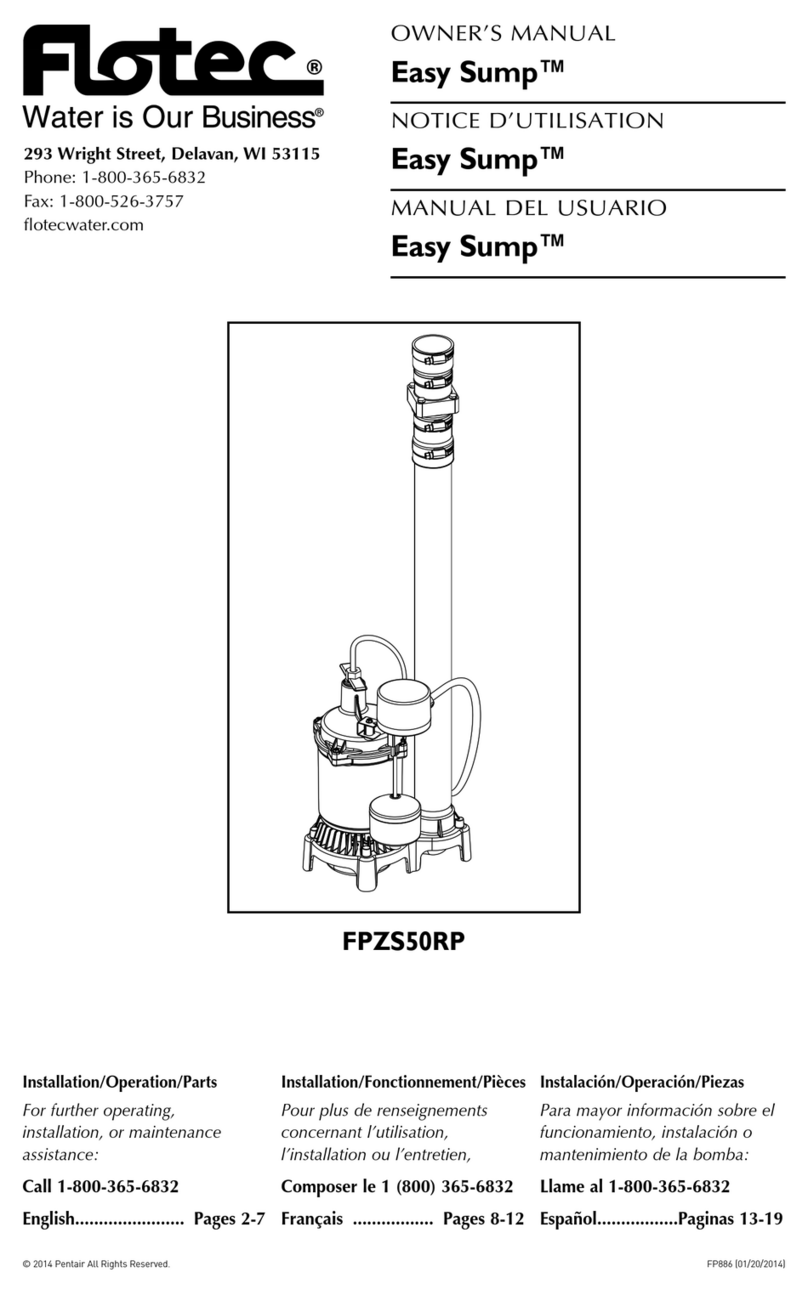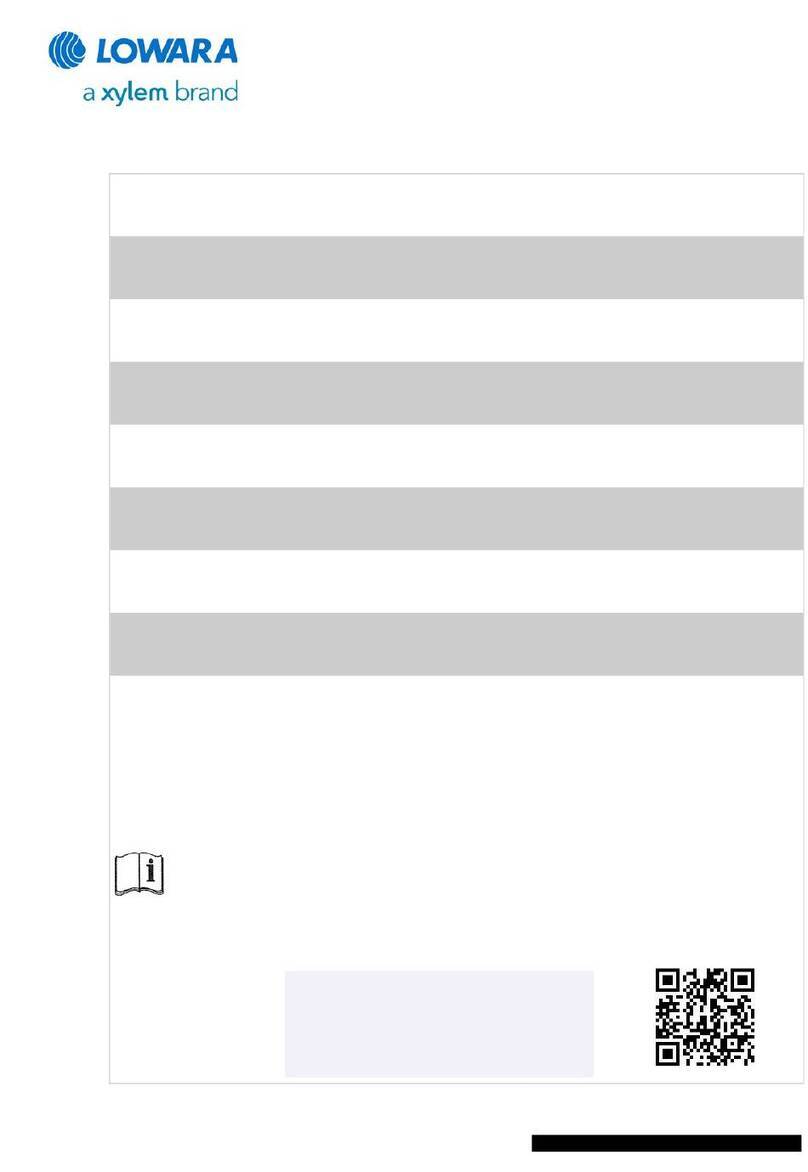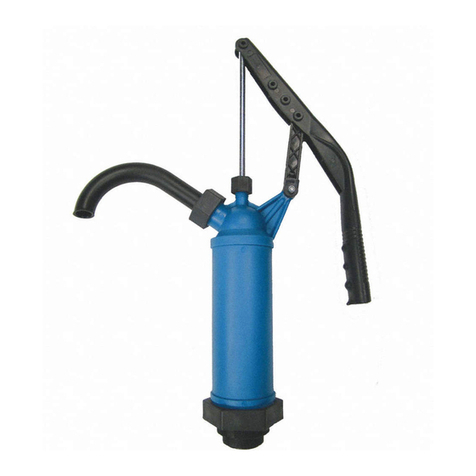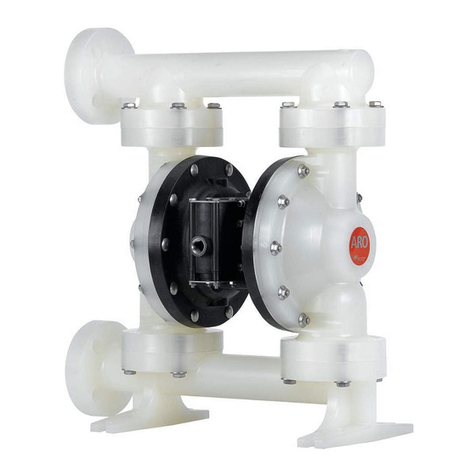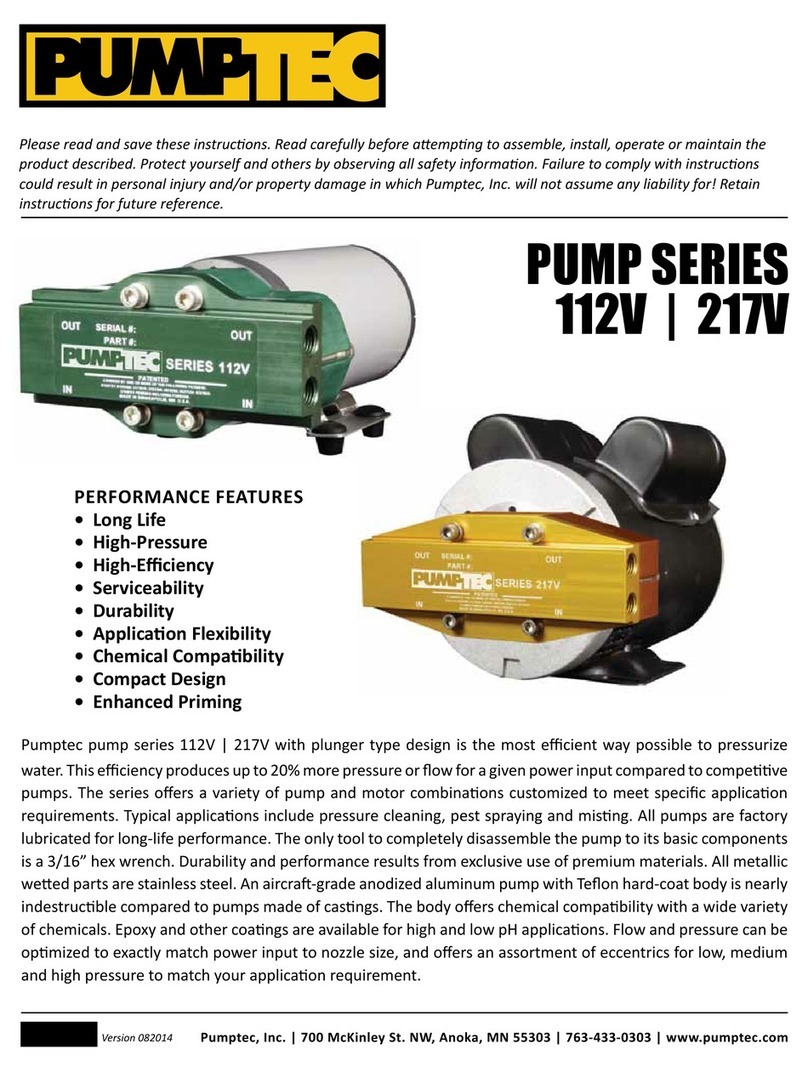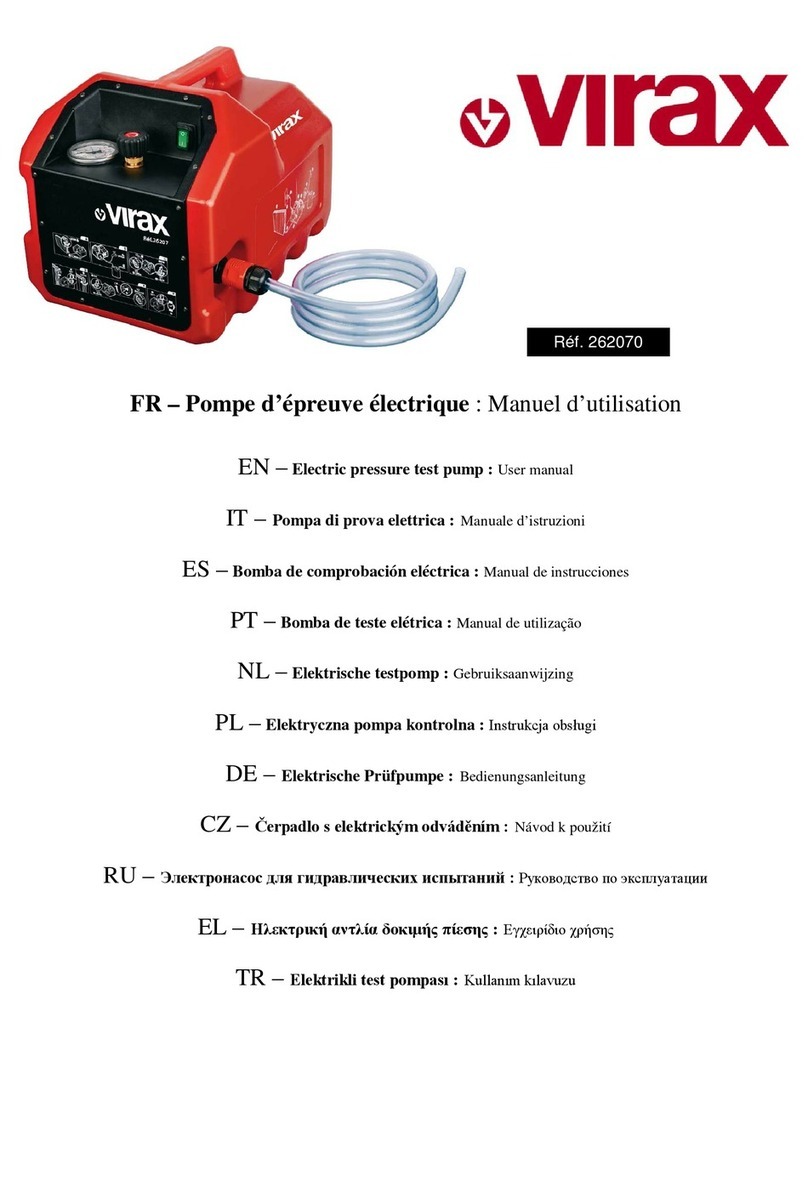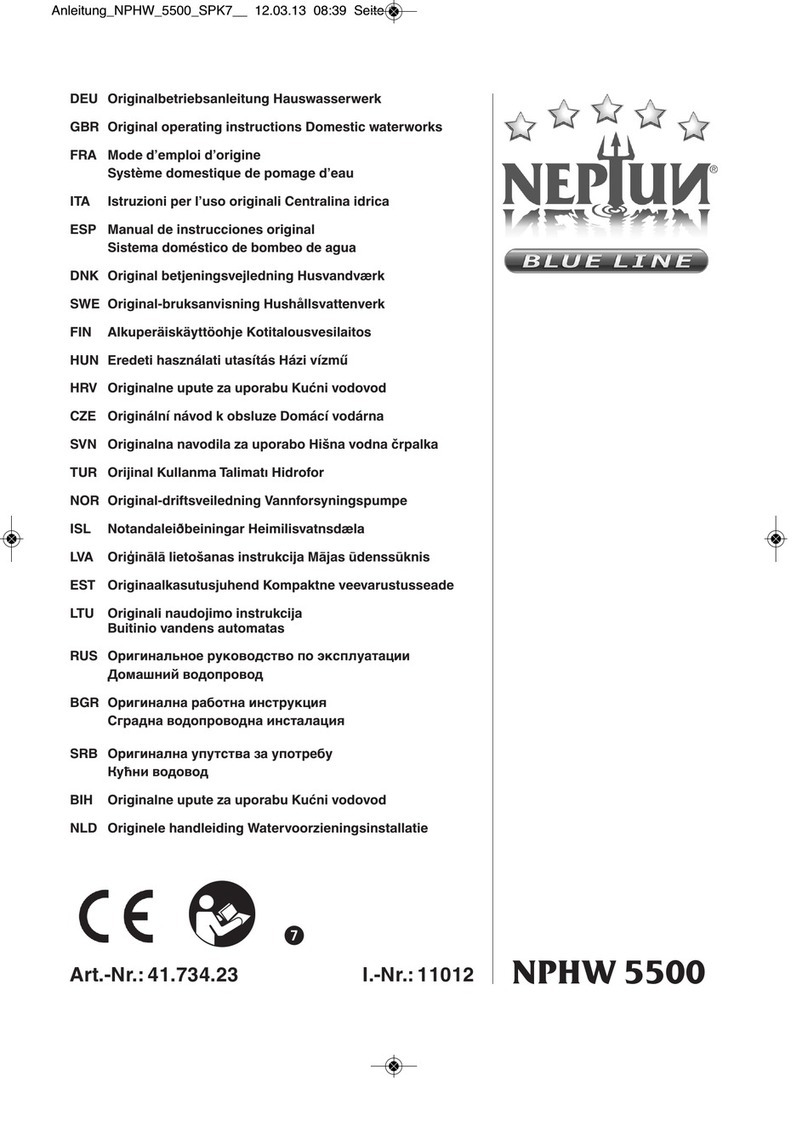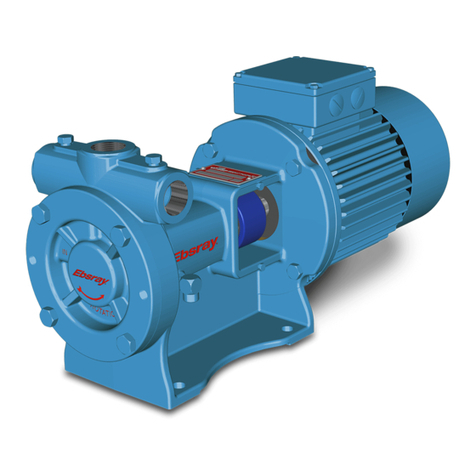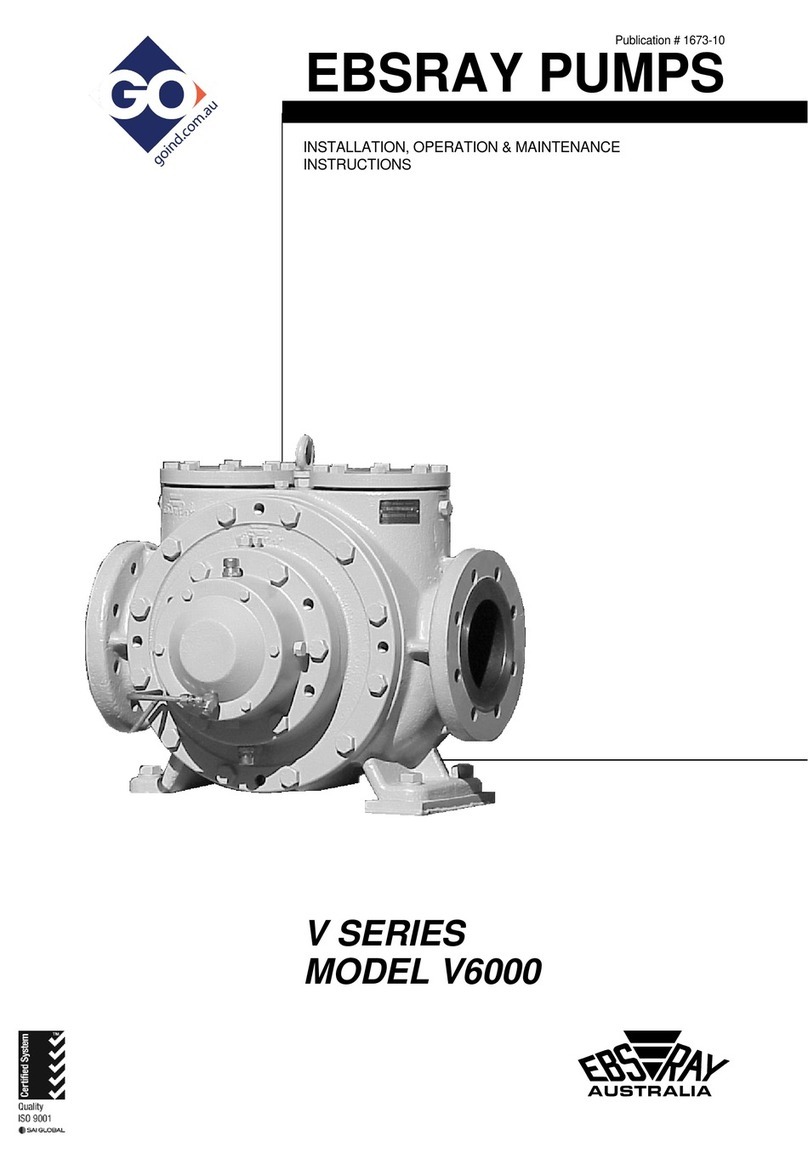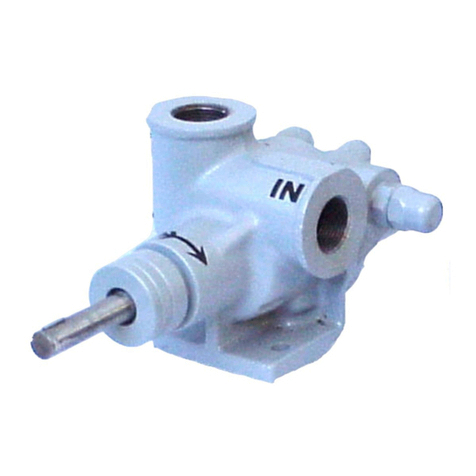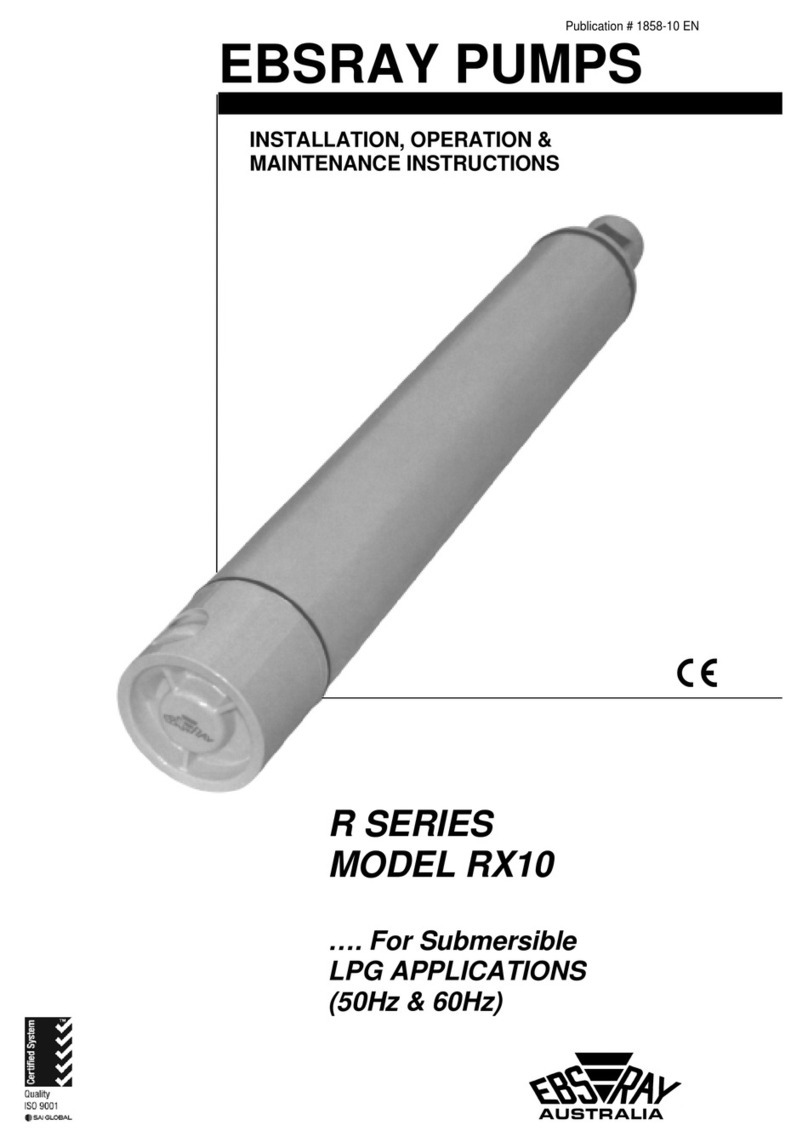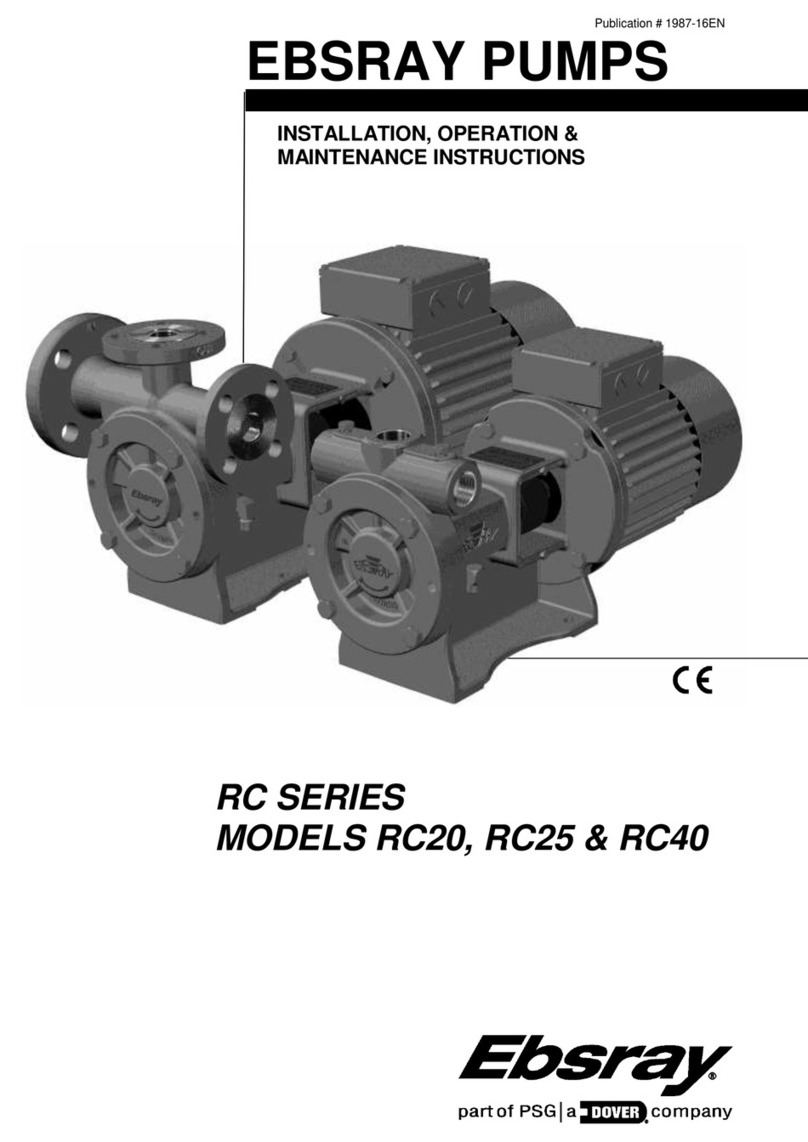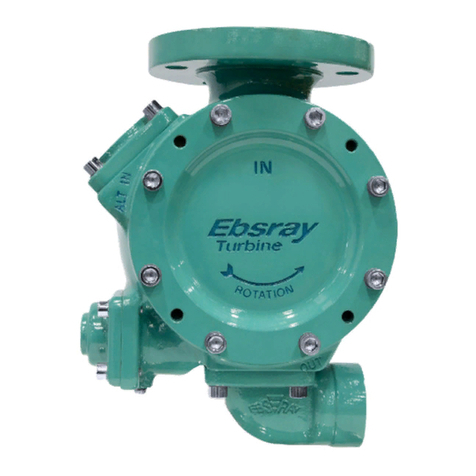
8
9. Pack pump end bearing fully with
grease and press fit the bearing over
shaft end into bearing carrier until
inner cone is fully seated against
shaft shoulder.
CAUTION: Do not over grease the
bearings by filling the bearing
cavity with grease as this can
cause overheating and damage to
the bearings.
10. Fit bearing spacer to shaft. Fit internal
circlip in groove in bearing carrier.
Press oil seal into place against
internal circlip, ensuring correct
orientation as per drawing.
11. Pack drive end bearing fully with
grease and press fit on shaft.
12. Place pump in horizontal position and
firmly attach bracket to a baseplate or
bench.
13. Fit spacer, lockwasher and locknut on
shaft. Tighten and secure locknut by
bending lockwasher tab into locknut.
14. Fit shims on end cap. Shim quantity
should be as originally factory set. If
shims are being replaced, begin with
0.6mm’s of shims and follow steps 15
and 16 to set bearing clearance. Align
grease tapping drain hole in end cap
with the 4 o'clock grease tapping on
bearing carrier. Fit end cap with
capscrews.
15. Using suitable turning device, rotate
shaft by hand to ensure no restriction
to rotation of shaft.
16. Using a dial indicator, measure bearing
clearance by pushing the shaft back
and forth within body, continually
rotating shaft by hand between
measurements. Adjust shim quantity
until clearance is set to 0.05 to 0.08
mm.
17. Loosen bearing carrier capscrews and
slowly tighten adjustment screws until
rotor is pulled back in body. Assemble
inner rotor over inner rotor pin and fit
cover assembly to body complete with
'O' Ring.
18. Loosen adjustment screws and slowly
and evenly tighten bearing carrier
capscrews whilst rotating the shaft
slowly by hand using a suitable
turning device. When slight drag is felt
by hand the point of contact of outer
rotor to cover has been sensed
(0.0mm axial clearance).
19. Ensuring the bearing carrier flange is
parallel with the body, measure the
gap between bearing carrier flange
and body i.e. establish a datum point
for setting axial clearance.
20. Back off bearing carrier capscrews
and evenly screw in the adjustment
screws until the gap between the
bearing carrier flange and body
equals the original gap plus the
desired axial clearance (0.05 mm as
shown in the table of clearances).
Evenly tighten the bearing carrier
capscrews and once again check the
gap, ensuring the bearing carrier
flange is parallel to the body. Axial
clearance should now be established.
21. Turn shaft by hand with a suitable
turning device to ensure smooth
rotation.
22. Fit grease nipples and grease
reservoirs with elbow fittings to
bearing carrier. Orientate reservoirs
so that they will be in a vertical
position depending on whether the
pump is mounted in a shaft horizontal
or shaft vertical position.
23. Apply 10 grams of grease through
each grease nipple.
